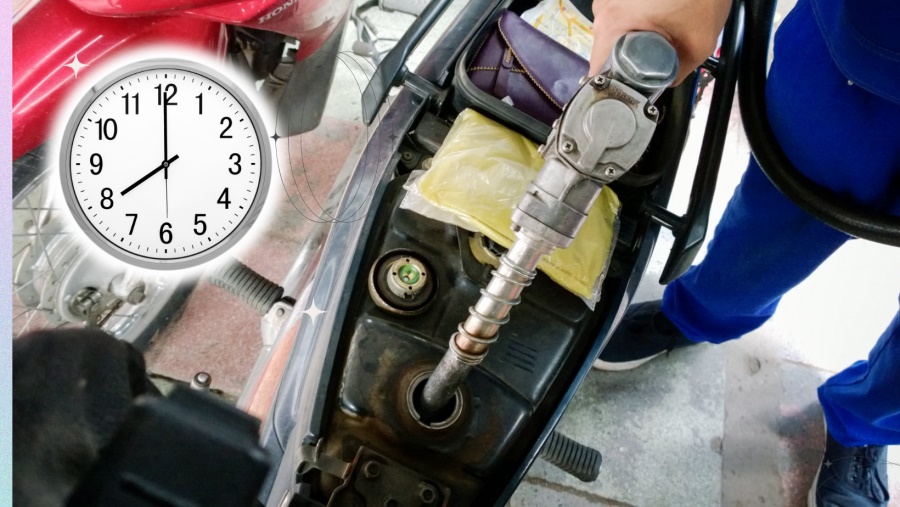Refueling in the morning or at night is more beneficial than refueling during hot weather, as at that time, the gasoline volume contracts, which benefits the buyer. Is this really accurate?
In theory, this is correct. Gasoline expands or contracts depending on temperature. In the morning, when the weather is cooler, gasoline contracts, reducing its volume. Therefore, refueling in the early morning hours is the most advantageous. Conversely, during the hottest part of the day, when you pay for 10 liters of gasoline, you might only receive around 9.1 to 9.3 liters, with the rest being vaporized gasoline.
Therefore, consumers should purchase fuel in the morning when the temperature is lower. By doing so, you’ll get more fuel for the equivalent amount of money spent compared to refueling during midday or afternoon hours.
Moreover, you should not refuel while the fuel truck is actively pumping gas into the station’s storage tank. When the fuel truck pumps gas vigorously into the storage tank, it increases the pressure inside the gas station’s tank, causing the gasoline to expand. This results in purchasing a mix of gasoline and vapor.
Refueling during this specific time frame remains cost-effective, regardless of gasoline price increases.

John shared: ‘I think refueling in the cooler morning hours is best, as overnight the gasoline contracts, reducing the volume. Refueling during high temperatures may result in paying for a portion of vaporized gasoline.’
Similarly, Alex also suggests asking for a slower flow of gasoline into the tank when refueling. If the gasoline pours into the tank quickly and forcefully, it expands more. If the tank is almost empty, refueling with a forceful stream will increase the pressure, causing the gasoline to expand. When the gasoline is at half capacity, the distance from the nozzle to the newly filled gasoline reduces, and the pressure inside the tank isn’t as high as when the tank is nearly empty.
Tips for Cost-effective Refueling:
Fill up by volume, not by the amount of money.
Many people buy gasoline based on the cost, in round numbers. However, this method can provide opportunities for pump attendants to manipulate the transactions, due to “jumping the amount.” These actions can occur through programmed pump displays.
To avoid being overcharged when refueling, purchase gasoline by volume, such as 1 liter, 2 liters, depending on your vehicle’s fuel tank capacity.
Only refuel the amount needed for the journey; less gasoline means lighter weight for the car, resulting in fuel savings.
Additionally, refueling a full tank makes consumers more susceptible to being cheated. Because of the automatic shut-off mechanism in the gas pump, when the gasoline reaches the brim and touches the nozzle’s edge, the pump will automatically stop. Invisible to the consumer, attendants may fill the tank less than what the meter displays.
Follow the “Taxi Wing”
Choose gas stations frequented by taxi or truck drivers. This is a savvy trick used by many consumers.
These drivers are regular commuters, so they have more experience with gasoline stations.
Avoid Refueling While Two People Are Operating
Many gas stations claim to have many customers or are overloaded to justify two-person refueling procedures. That is, one person operates the pump, and another handles the nozzle. While it may seem like attentive customer service, it can also be a blatant cheating tactic. Therefore, it’s best to be alert and carefully monitor the gas meter in such cases.
Compare Between Purchases
If you travel on a fixed route and always refuel in the same place, buy a fixed amount of gasoline and check your car’s fuel gauge for comparison in subsequent refuels and at different gas stations.
Based on the liters purchased and the distance traveled, select the gas station you trust the most.












